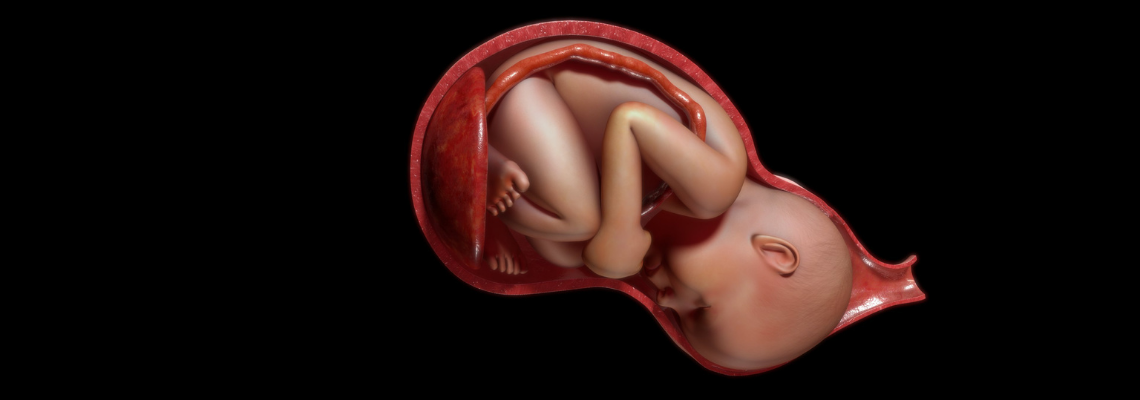
A retained placenta is a rare and serious complication that affects about 3% of all deliveries. This article discusses what a retained placenta is and what to expect.
What Is a Retained Placenta?
The placenta is a temporary organ that develops during pregnancy to provide oxygen, blood and nutrients to your baby. Normally, you will deliver your placenta shortly after giving birth.
The placenta may remain in the womb entirely or in part. This is known as a retained placenta, which can have serious consequences.
Types of Retained Placenta
- Placenta Adherens: The adherens type of retained placenta is the most prevalent form of retained placenta. It occurs when the uterus, also known as the womb, is unable to contract sufficiently to discharge the placenta. Instead, the placenta stays linked to the uterine wall only by a thin band of tissue.
- Trapped Placenta: A trapped placenta occurs when the placenta successfully detaches from the uterine wall but cannot be removed from the woman’s body after detaching from the uterine wall. This usually occurs due to the cervix closing before the placenta has been removed from the uterus. The placenta is trapped inside the uterus after birth.
- Placenta Accreta: It occurs when the placenta adheres to the muscular walls of the uterus rather than the lining of the uterine walls during pregnancy. The delivery becomes more difficult, and the woman experiences heavy bleeding. It is possible that blood transfusions or perhaps a hysterectomy will be required during delivery.
Causes
Different things can cause this serious complication. They include:
- Uterus deformities
- The placenta growing into the uterine wall
- Premature delivery
- Being on oxytocin medication for too long
- Lack of enough contractions in the uterus
- Long labor
- Giving birth many times or having large babies
Signs and Symptoms
 A retained placenta is distinguished by the fact that the placenta does not entirely exit the uterus after the baby is born. Another symptom that might occur before the placenta is removed is bleeding. If a bit of the placenta is left behind after the birth, you may experience symptoms several days or weeks later. These may include the following:
A retained placenta is distinguished by the fact that the placenta does not entirely exit the uterus after the baby is born. Another symptom that might occur before the placenta is removed is bleeding. If a bit of the placenta is left behind after the birth, you may experience symptoms several days or weeks later. These may include the following:
- Heavy bleeding
- Fever
- Severe pain
- Pieces of tissue coming from the placenta
- Foul-smelling vaginal discharge
Who Is at Risk?
A woman’s chances of having this condition are increased by the following factors. They include:
- Being over 30 years old
- Experiencing premature birth, which occurs before the 34th week
- Having an extremely long first or second stage of labor
- Delivering a stillborn baby
What Is the Treatment for a Retained Placenta?
Some factors increase the risk of this condition. Your doctor will thoroughly examine your medical history, including your birth history. They may establish strategies during your pregnancy to prevent or treat retained placenta. Your doctor or midwife will also frequently instruct you on avoiding it shortly after delivery.
- Breastfeeding: Breastfeeding after giving birth naturally makes the uterus contract, which can help prevent the placenta from being retained.
- Changing positions: This helps contract the uterus, and it pushes out the placenta. Rolling to the side and squatting are the main positions that can help treat this complication.
- Massage: Abdominal massage helps the uterus contract, releasing the placenta from the uterine wall.
- Medication: If the above methods don’t work, the doctor will give you medicine that makes the uterus contract, helping you deliver the placenta.
- Manual removal: If the doctor examines and diagnoses that your placenta is retained, they might consider removing it by hand. You will be administered an anesthetic, and the placenta will be manually separated in the uterus.
- Surgery: This is the last option, and surgery carefully removes the placenta.
A retained placenta is a rare occurrence, but it does happen occasionally. Pushing out your placenta is a necessary part of giving birth to a child, and your doctor will keep a close eye out for when it happens.


